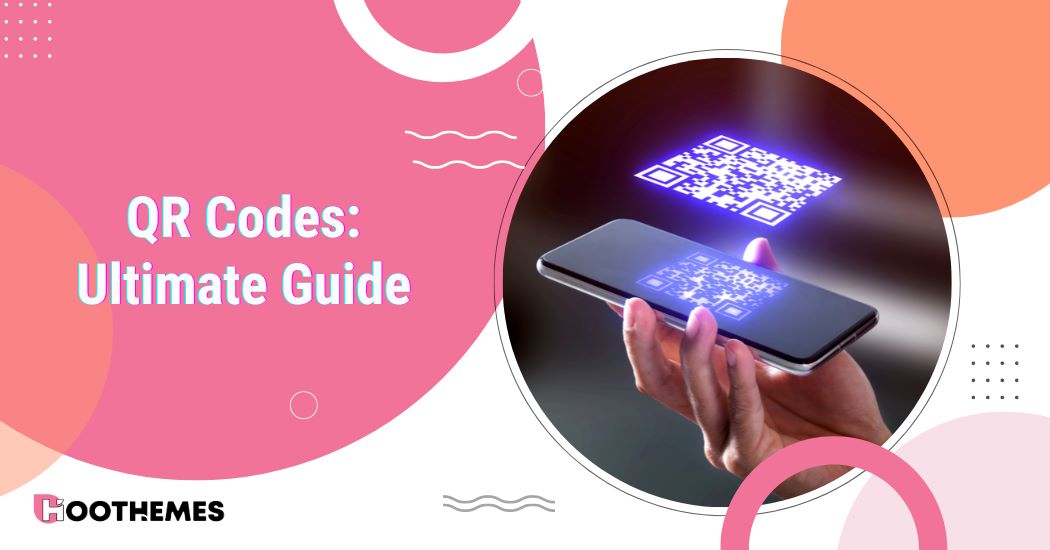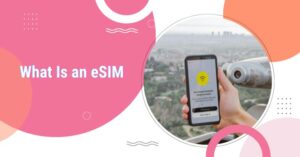Why are QR codes important? Let’s answer this question with an example. Imagine yourself wandering through a bustling marketplace in a foreign country. The sights, smells, and sounds are captivating, but there’s a nagging curiosity about a particular handcrafted item.
Frustrated, you can’t decipher the language on the label. Suddenly, you spot a familiar square pattern with black and white squares – a QR code. With a quick scan from your phone, information about the product magically appears in your preferred language!
This is the power of QR codes. These seemingly simple patterns transcend cultural and linguistic boundaries, providing instant access to information. They aren’t just for digital marketing anymore.
Beyond bridging language gaps, these codes hold immense potential for promoting accessibility for people with disabilities. Let’s delve deeper into this fascinating global language and explore how it’s fostering a more inclusive world.
What Is a QR Code
A QR code, short for Quick Response code, is a two-dimensional barcode that can store a variety of information, such as text, URLs, contact information, or other data. QR codes are square-shaped patterns made up of black modules arranged on a white background.
They were initially developed in Japan for tracking automotive parts during manufacturing but have since become widely used in various applications, including marketing, advertising, ticketing, product packaging, and mobile payments.
QR codes can be scanned using a smartphone or a dedicated QR code reader, which interprets the encoded information and performs the corresponding action, such as opening a webpage or adding contact details to the phone’s address book.
Now, businesses and individuals are using QR codes for easier integration with social media platforms. For example, an Instagram QR code can be generated to directly lead users to a specific profile or post. This simplifies the process of connecting and sharing content. With just a quick scan, users can effortlessly engage with their favorite brands or personalities on social media.
QR Codes for Global Communication
These codes function as a universal language, acting as a bridge between cultures and languages. In fact, you can even make a QR code from photo you take on your travels! Here’s how these codes serve to connect people from diverse backgrounds:
- Multilingual Information: Tourist attractions can utilize QR codes to display information in multiple languages, eliminating the need for physical translations.
- Product Descriptions: Global brands can offer detailed product descriptions in various languages through QR code scans, catering to international consumers.
- Translated Menus: Restaurants can provide QR code access to menus, allowing diners to translate them on their phones for a seamless dining experience.
QR codes not only bridge language gaps but also promote cultural exchange. By providing access to a wealth of information, they encourage deeper exploration and understanding of different cultures.
QR Codes for Accessibility
The power of QR codes goes beyond language barriers. These versatile tools can bridge the gap for people with disabilities, creating a more inclusive world. Museums and art galleries can utilize these codes to offer audio descriptions of exhibits for visually impaired visitors.
Imagine visiting a historical landmark and scanning a QR code to hear a detailed narration about its significance, enriching your experience. Similarly, QR codes can be used to provide text transcripts of videos or presentations, ensuring deaf or hard-of-hearing individuals have full access to information.
Menus at restaurants can be linked to QR codes that translate descriptions into braille or offer voice-over options, empowering visually impaired individuals to make informed choices.
When designing these codes for accessibility, it’s crucial to keep inclusivity in mind. Codes should be large enough for easy scanning, have high contrast for better visibility, and be accompanied by alternative text descriptions for screen reader users.
Benefits of Using QR Codes
Quick Response codes offer several benefits. Let’s take a look at some of them:
#1 Ease of Use
QR codes are simple to create and use. Users can quickly scan them with their smartphones, eliminating the need for manual data entry or typing in long URLs.
#2 Cost-Effectiveness
Generating quick response codes is generally inexpensive, and they can be printed on various materials, such as paper, stickers, or labels. This makes them a cost-effective solution for businesses and organizations.
#3 Enhanced Marketing
QR codes can be used in marketing campaigns to provide additional information or content to customers. They can link to product details, promotional offers, videos, social media profiles, and other digital content, enhancing engagement and interaction.
#4 Contactless Transactions
In contexts like payments or ticketing, quick codes enable contactless transactions, reducing the need for physical contact and enhancing convenience, especially in situations where hygiene and safety are concerns.
#5 Security
QR codes can incorporate security features such as encryption or password protection, ensuring that sensitive information remains secure during transmission.
A Bridge to the Digital World: QR Codes for All
In today’s digital age, access to information is paramount. However, not everyone has the same level of digital literacy or internet access. Here’s where QR codes shine again. They act as a bridge between the physical and digital world, simplifying access to online information through familiar physical prompts.
Imagine visiting a national park and encountering a QR code on a trail marker. Scanning it could lead you to a website with detailed information about the park’s flora and fauna, historical significance, and even interactive maps.
QR codes can also be used to offer downloadable content or resources. Imagine attending a workshop and receiving a handout with a QR code. Scanning it could provide you with access to additional materials, presentations, or even bonus videos, enriching your learning experience beyond the physical session.
Additionally, these codes can link to PDFs or web archives, allowing users to access essential information even in areas with limited internet connectivity. This is particularly beneficial for individuals in remote locations or those with limited data plans.
Final Words
The potential of QR codes to promote global communication and accessibility is constantly evolving. As technology advances, we can expect even more exciting applications. Imagine a future where created QR codes by generators like Me-QR, integrate seamlessly with augmented reality (AR).
Scanning a code on a historical building could overlay a virtual reconstruction on your smartphone screen, bringing the past to life. Real-time translation technology could be integrated into QR code scanners, allowing for instant language conversion during conversations or presentations.
It’s important to acknowledge the need for responsible QR code usage and user privacy considerations. QR codes should always be accompanied by clear instructions and links to trustworthy sources. With thoughtful implementation and responsible use, quick response codes can become a powerful tool for fostering a more inclusive and interconnected world.
QR codes are more than just a passing fad. They are a powerful tool for breaking down communication barriers, promoting accessibility, and bridging the digital divide. In a world increasingly interconnected, these codes have the potential to foster a more inclusive and equitable global society.
As technology continues to evolve, the possibilities for QR codes to further connect and empower people across cultures and abilities are endless. So next time you encounter a QR code, don’t just see a black and white square; see a window of opportunity for a more interconnected and accessible world.
FAQs
Q1. What Is the History Behind QR Codes?
Quick Response codes were invented by a Japanese company called Denso Wave in 1994. Initially used for tracking automotive parts, QR codes have since evolved into a versatile tool for storing and accessing information across various industries.
Q2. How Do QR Codes Work?
QR codes work by encoding information such as text, URLs, contact details, or other data into a two-dimensional barcode made up of black modules arranged on a white background. Users can scan quick response codes using a smartphone camera or a dedicated QR code reader app, which interprets the encoded information and performs the corresponding action, such as opening a webpage or adding contact details to the phone’s address book.
Q3. Are QR Codes Secure?
QR codes can incorporate security features such as encryption or password protection to ensure the security of sensitive information during transmission. However, users should exercise caution when scanning QR codes from unknown or untrusted sources to avoid potential security risks such as phishing attacks or malware.




